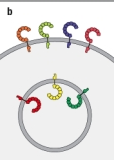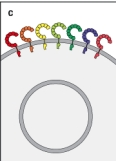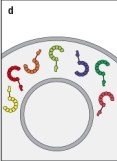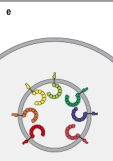Multiple Choice
As a family, TLRs can recognize PAMPs associated with a broad array of different pathogens, including bacteria, viruses, and fungi. Patients with a specific susceptibility to herpesvirus infections have a defect in their ability to respond to viral nucleic acids using TLR-3, TLR-7, or TLR-9, even though these proteins are expressed in the patients' cells. Analysis of the TLRs in macrophages and dendritic cells from these patients would likely show which of the arrangements in Figure?
A) 
B) 
C) 
D) 
E) 
Correct Answer:

Verified
Correct Answer:
Verified
Q1: Cytokine receptors of the hematopoietin superfamily engage
Q2: Macrophages express multiple types of receptors on
Q3: Many different NOD-like receptors, including several with
Q4: Each family of NK cell receptors has
Q6: Influenza virus infects and replicates in
Q7: Innate lymphoid cells (ILCs) are effector
Q8: Mycobacteria are intracellular pathogens that have adapted
Q9: Many of the inflammatory mediators produced by
Q10: Septic shock is a serious, often fatal
Q11: RIG-I like receptors (RLRs) such as RIG-I,